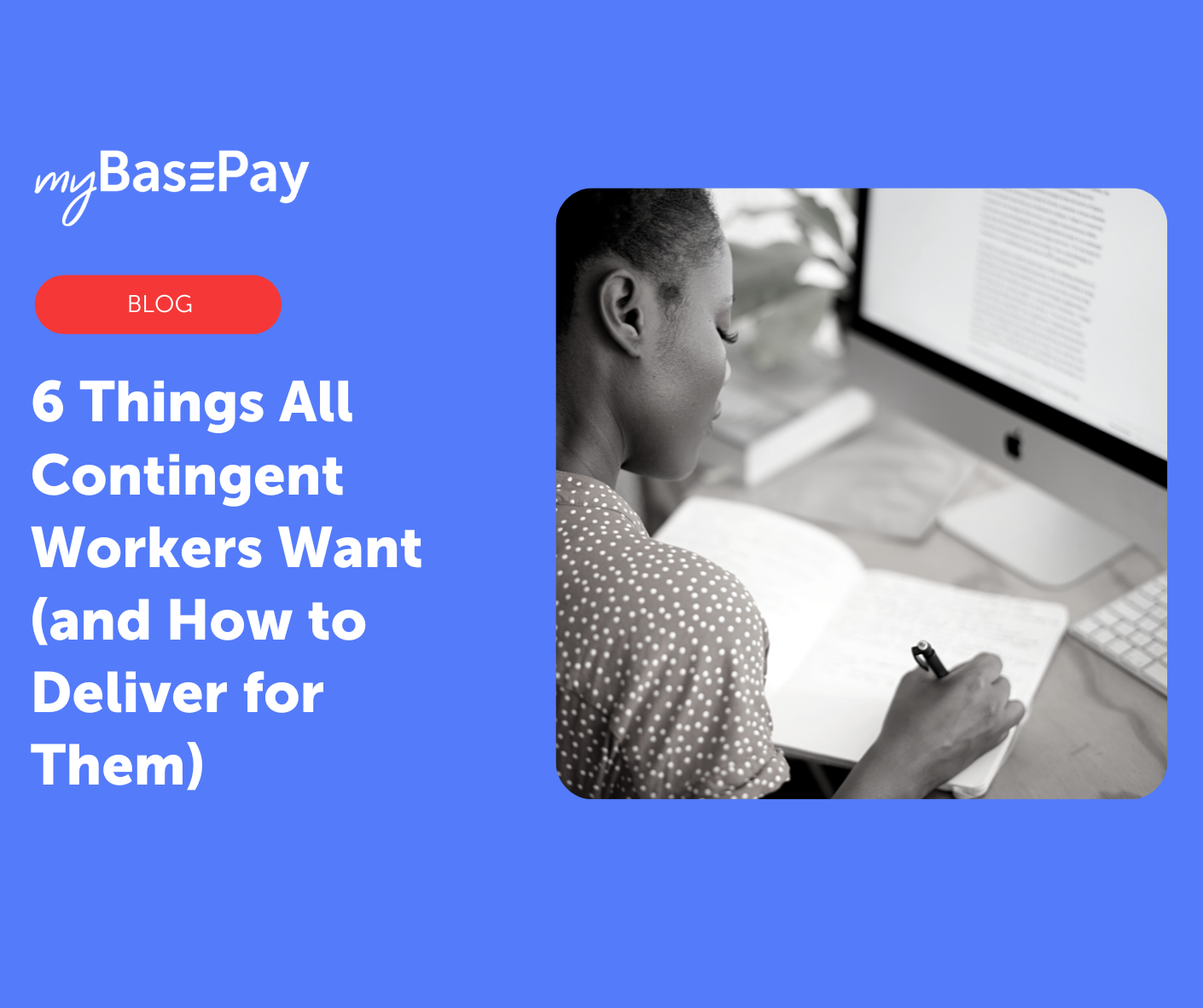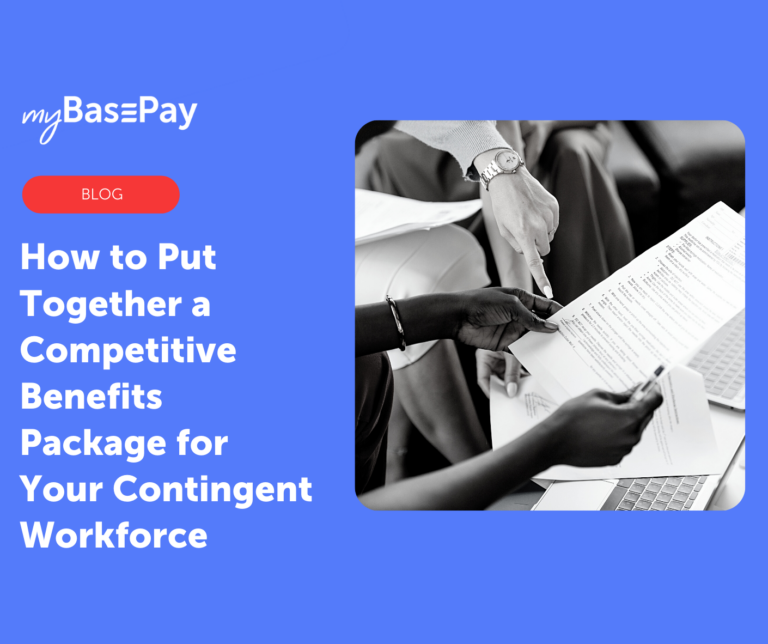6 Things All Contingent Workers Want (and How to Deliver for Them)
As much as 30% of the global working population is performing some kind of remote or independent work. Among these, contingent workers have become strategic pillars in various global industries, including manufacturing, automotive, logistics, and information technology fields.
Several reports indicate that this trend is only expected to increase, as more companies turn to the pool of temporary workers to fulfill their dynamic business needs. But as this demand grows, contingent workers expect to gain more from their partnerships with employers.
Adapting a unique recruitment strategy largely depends on your value proposition. Workers have expectations, and companies must live up to those if they hope to attract, acquire, and retain top contingent talent. To help your business in its recruitment efforts, here are six things all contingent workers expect from an employer, and how you can accommodate them.
1. Opportunities for Career Growth
Though contingent workers are temporary, that doesn’t mean they don’t have career goals like permanent employees. While offering higher wages can certainly help entice a candidate, providing opportunities for development and advancement are going to be distinguishing factors that attract higher-quality contingent talent.
As you interview candidates, talk to each worker about their vision for the future. Then, use that information to identify potential opportunities for them to exercise their expertise in your company while growing at the same time.
Any employer should want the best for their workers — contingent or permanent. By showing that you’re interested in their career development, candidates are more likely to prioritize your business over the competition, stay loyal to the company, and become available for future work.
Also, if your company is able, offering possibilities for redeployment or full-time positions within the company can help attract and retain contingent workers who might be looking to transition to a more permanent role in the future.
2. Flexible Hours
Just as you as an employer are searching for a flexible recruitment option, so are your candidates. Contingent workers are not full-time employees, which means they should receive more flexible working conditions and schedules. While this might seem like an obvious point, already 25% of global contingent workers want more flexible schedules to accommodate work-life balance.
Also, keep in mind that your contingent workers more than likely have other working arrangements, educational pursuits, or business partnerships they’re engaged in, which means you can’t expect them to be readily available during all working hours.
When recruiting contingent labor, it’s your job to make sure they have time and space to acclimate to their hybrid schedule. The purpose of staffing a temporary worker is to use their skills for casual, contract work, not core business processes — and their work schedules should reflect as much.
As you conduct your recruitment strategies, be open with your candidates about your scheduling requirements, and offer solutions to ensure their expectations align with yours.
3. Provided Perks and Services
Generally, contingent workers don’t receive salary packages that are enjoyed by full-time employees. But while a contractor or freelancer does not require medical benefits, pension contributions, employee benefits, or bonuses, offering other perks similar to those of a full-time worker is undeniably a way to attract and retain contingent labor.
Providing training or educational programs, for example, is particularly appealing to temporary workers. Not only does it ensure they’re well-prepared to fulfill their responsibility to your organization, but it also allows them to develop their skills for future positions. Additionally, offering multiple rapidly, on-demand payment options could be seen as a considerable perk to a contingent worker.
Though an overlooked component, contingent workers often face financial challenges due to late or missed payments. Especially during the pandemic, thousands of workers experienced delays of up to four weeks to receive a paycheck.
By simply offering reliable, fast access to pay, 78% of contingent workers said they have become more loyal to their employer. As a result, companies have seen a considerable improvement in the performance of their contingent workforce.
4. Engagement Throughout Assignments
While they may be short-term, contingent workers still want to feel part of a team. As valuable assets to your company, they should be given the freedom to connect with fellow employees, even in a remote setting.
For remote teams, this can be done in the form of informal introductions to coworkers and brief explanations of everyone’s role. For your brick-and-mortar workforce, networking events, training exercises, or volunteer projects can also serve as an effective way to integrate contingent and permanent workers. Establishing that bond might seem unnecessary for a contractor, freelancer, or consultant, but it’s crucial to getting the most out of these skilled workers.
5. Support for Work-Life Balance
Like permanent employees, contingent workers are students, spouses, parents, and/or caregivers in their personal lives. That means they experience stress, burnout, anxiety, and other burdensome feelings just as much as every type of worker.
When it comes to tackling this issue, contingent workers expect more support from their employers to achieve a greater work-life balance. This might mean putting an end to late-night deadlines, delegating complex projects, offering childcare solutions, or creating more supportive leave-of-absence policies.
The goal of your work-life balance strategies should be to ensure your contingent workers can accomplish their best work. Especially if you’re looking to develop a long-term relationship with your workers, showing your support when challenges arise is crucial.
6. Positive Work Atmosphere
Building a motivated team is a two-way street. While your contingent workers have agreed to use their skills to drive your business forward, you, too, must compensate them for their work. We’re not talking about financial compensation. Setting up a group of people for success also has to do with the emotional and physical ways you can support and motivate them.
That means establishing a positive working environment, whether it be online or in-office. To help you accomplish this, we’ve already given several tips, including promoting work-life balance, offering training support, and ensuring your contingent workers feel like a team-player.
But this can also be done by conducting regular check-ins with your temporary workers, encouraging more team collaboration, and using channels to establish effective communication.
As the global workforce undergoes massive shifts and contingent labor becomes in high demand, your business must learn to make necessary changes. Transforming and elevating your contingent labor program with these expectations in mind can ensure you attract top talent.
Author: Cesar Jimenez, myBasePay CEO
Cesar A. Jimenez is an entrepreneur, investor, and military veteran with over 25 years of staffing industry expertise successfully leading technology staffing organizations. His expertise in the IT industry allows him to use his experience as a thought leader for talent acquisition, staffing, IT, and recruitment technologies with a passion for contingent workforce solutions. Cesar has held various leadership roles for both a global staffing organization and technology solutions companies. This expertise has enabled him to develop alternative workforce models that provide the agility for organizations to be competitive in today’s marketplace. In his spare time, he enjoys spending time with hisfamily, working out, and coaching high school baseball players.






